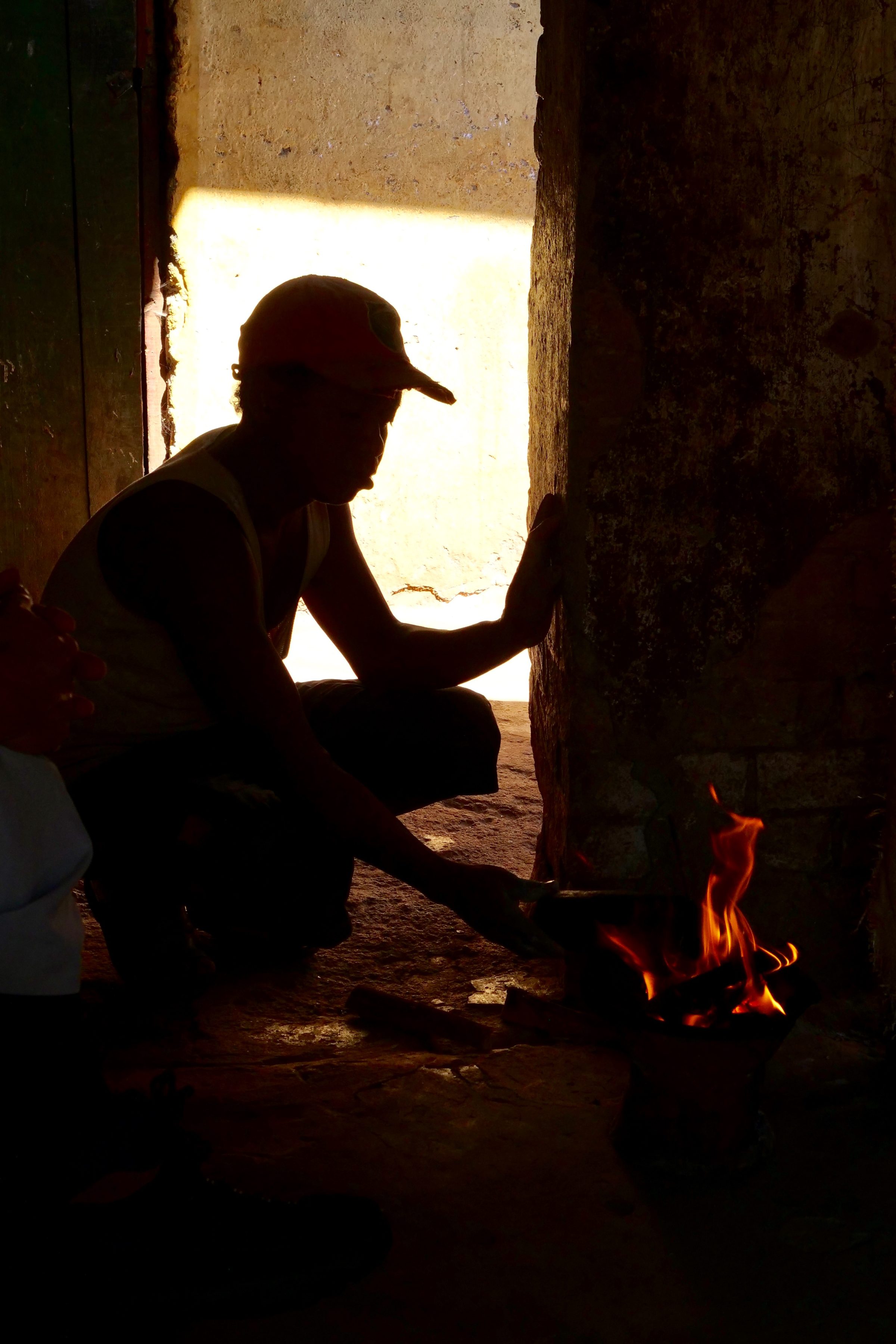As the immediately-preceding post observed, Madagascar’s emblematic domesticated animal has a great many uses/aspects.
Its horns can be turned into “cattle birds”, so to speak.
First step, once the abattoir has delivered the horns to the artists/craftspeople: throw the horns into the fire…
Last step: a lot of hand-polishing, and then the shiny “birds” are on sale.
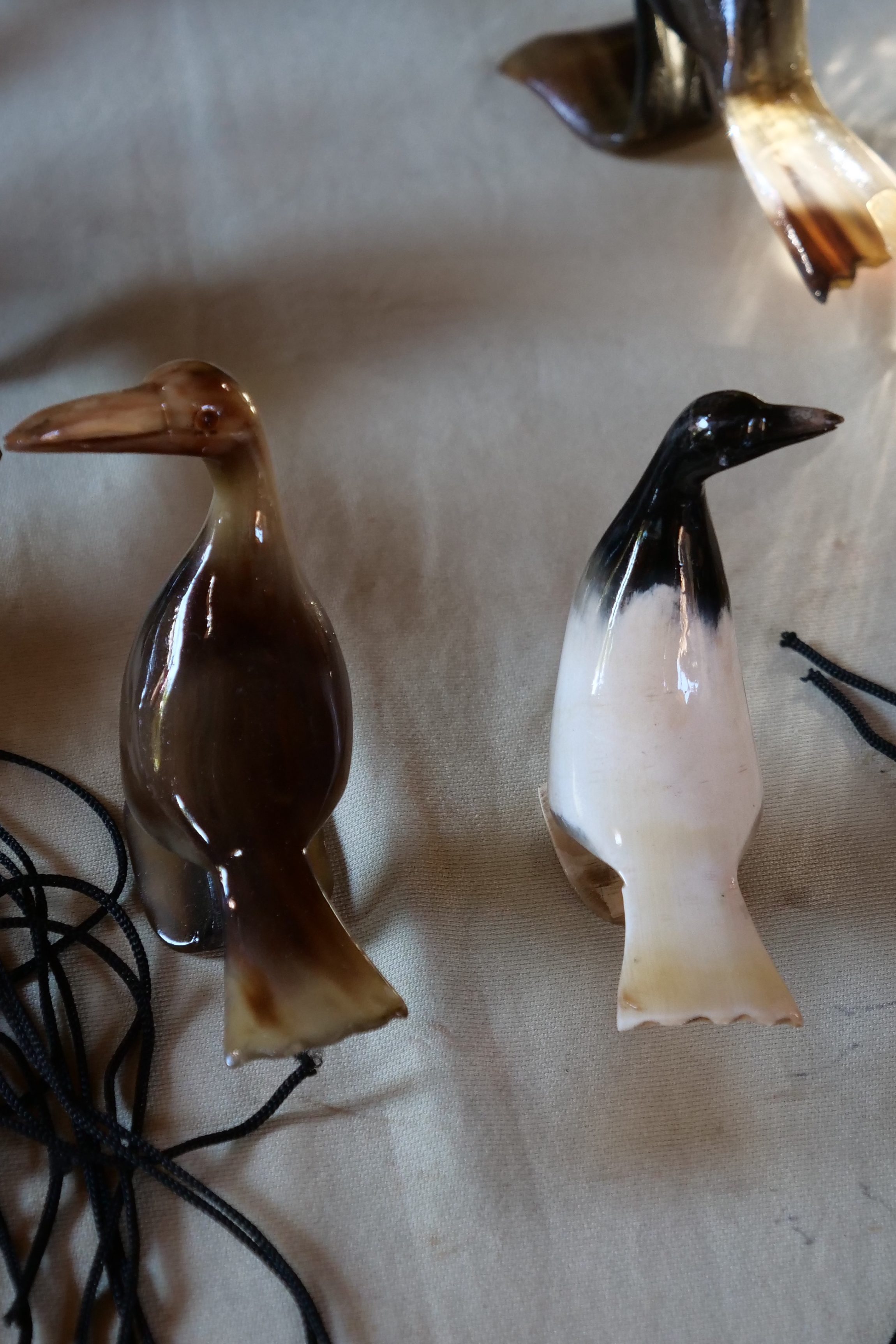
The fine polishing was doubtless a painstaking, slow process.
From raw horn to unpolished but fully-shaped “bird”, however, is quick, robust – a process which unfolded before us within a little less than 20 minutes.
Aside from the picture of the finished pair, all of this post’s photos involve one horn’s transformation, as it happened.
First, as pictured in this post’s featured image, the horn (moistened, I think) went straight into a hot fire for a couple of minutes.
It was then unceremoniously flicked onto the floor, and hammered.
Heat having expanded it, hammering it persuaded the horn to let go of the bone within.
The horn-proper is essentially keratin – the fibrous protein from which our own hair and fingernails are also built.
Horn is harder, denser, and more hard-wearing than are most types of wood. Like wood, it can be sawn.
When heated sufficiently, horn becomes plastic/pliable; it can be deformed/bent, as well as cut/sawn.
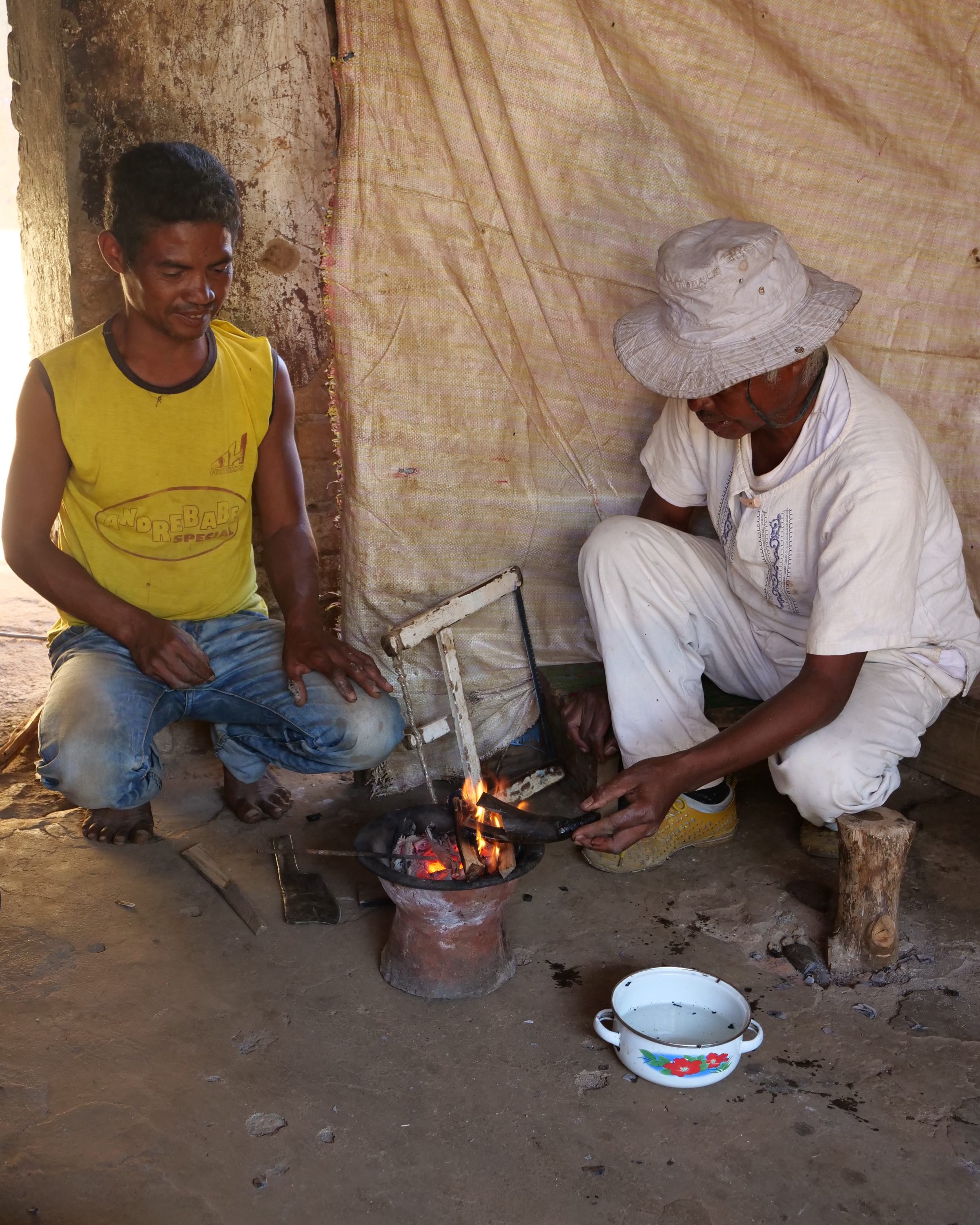
Let the horn cool, and most of the deformation is retained, permanently.
The craftsperson/artist can then further sand/polish/stain/saw the reshaped horn.
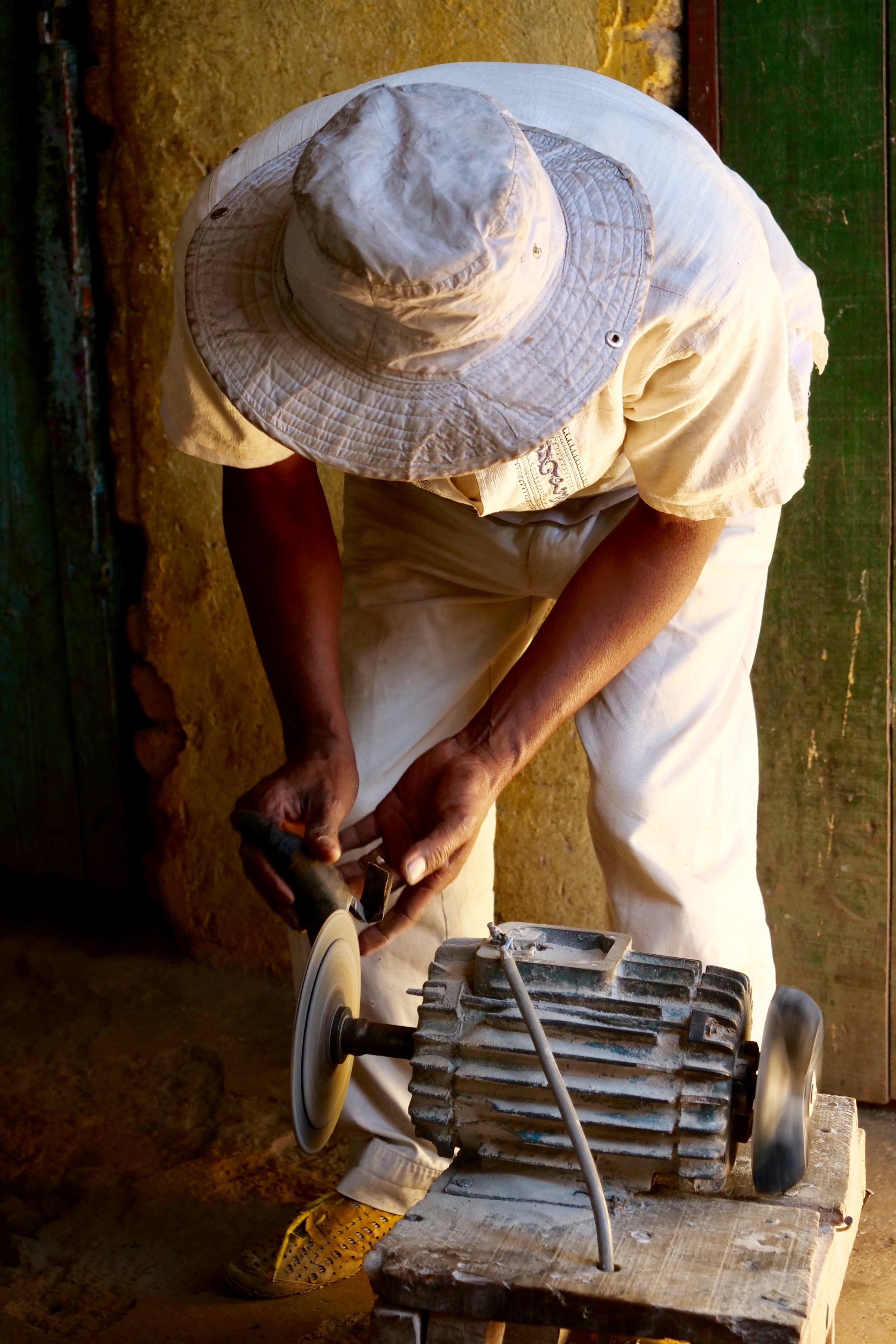
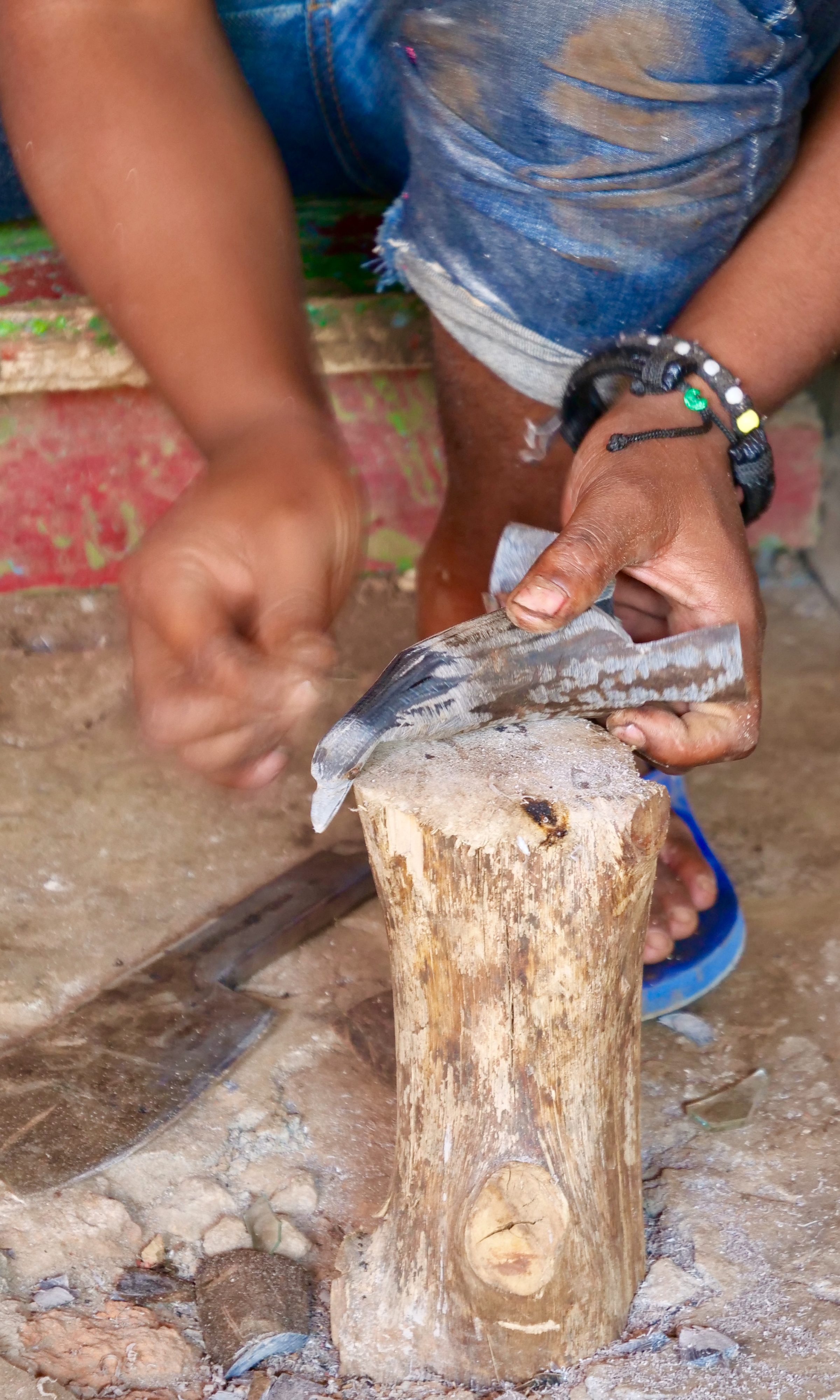
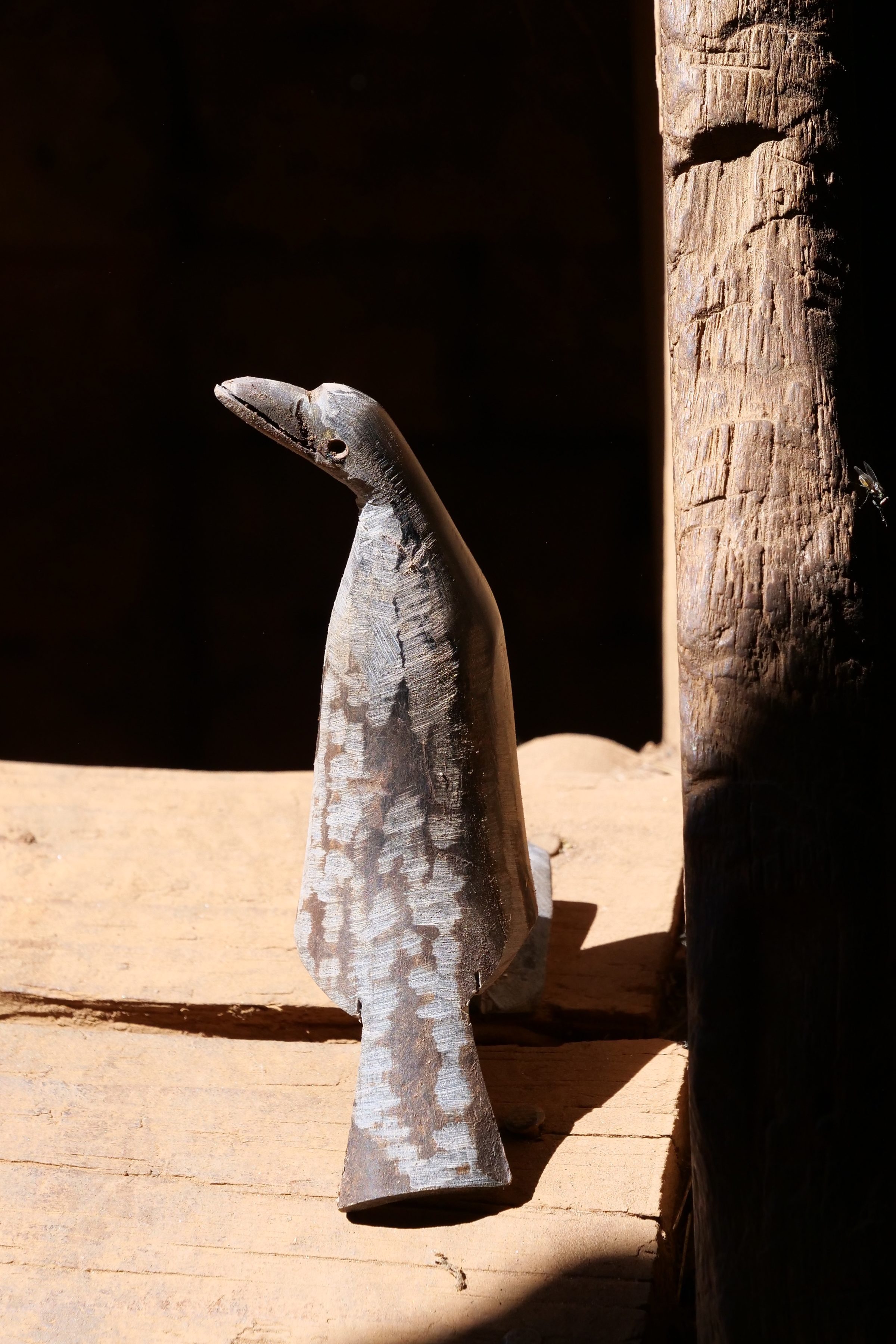
(discover more about making horn products, generally, here)
